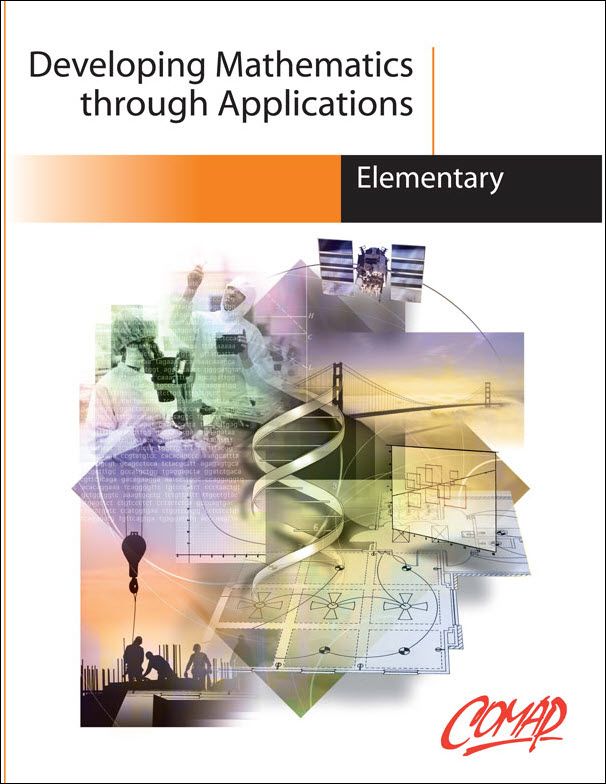Chapter 1: Measurement: Instructor Resources Developing Mathematics through Applications: Elementary (DevMAP)
Author: Nancy Crisler and Gary Simundza
Book/Course 1: Developing Mathematics through Applications: Elementary
Chapter 1 Measurement
Instructor Notes
Solutions
1.1 Measuring Length
1.2 Linear Measurement and the Pythagorean Theorem
1.3 Describing the Results of a Measurement
1.4 Measuring a Surface: Area
1.5 Volume, Surface Area, and Geometric Models
1.6 Other Kinds of Measurement
Chapter 1 Review
To the Instructor
This book is a different kind of developmental mathematics text. We believe that any mathematics worth learning is best learned in the context of its use by real people in real jobs. Without neglecting necessary practice with fundamental skills, we emphasize connections between mathematics and the workplace, both in the body of the text and in the exercises. Interesting applications motivate students to learn, and guided discovery helps them succeed in their learning by developing habits of persistence necessary for achievement.
The AMATYC Standards have been thoroughly embraced by this book: Active investigation of mathematics is emphasized throughout with the expectation that students will conduct much of this investigation in small, collaborative groups. The content integrates data analysis, measurement, and geometry with traditional topics in elementary and intermediate algebra. A modeling theme runs throughout the text, as students learn to construct a variety of models, using equations, graphs, tables, arrow diagrams, narrative descriptions, geometry, and statistics. Access to computing technology is assumed, although the text can be used successfully without it.
In addition to competence with mathematical skills and concepts, this text intends to provide familiarity with the “new basic skills” demanded by the modern workplace, as reflected in such documents as the SCANS Report and various Industry Skills Standards. These include critical thinking, team-building, interdisciplinary connections, and communications skills.
Unfortunately reading is frequently not a strength of developmental mathematics students. Our philosophy is that students should be encouraged to improve their reading skills as they develop mathematical facility. Many of the contextual situations in the text require students to read for mathematical content. Indeed, an essential part of acquiring the ability to model the world with mathematics is learning to see how mathematics is embedded in various
situations. We hope students will be encouraged to increase their reading ability as they see that careful reading helps them achieve mathematics competence. To this end, vocabulary is kept accessible and unfamiliar concepts are clearly explained in terms that students are able to understand.
Some topics that are not always considered part of developmental mathematics are introduced as they arise naturally in context. For example, vectors are mentioned in Chapter 1 as quantities whose measurement requires more than one number. Functions are introduced early as a way of describing dependency relationships between variables, and graphs of polynomials are touched on briefly in Chapter 4. These topics provide the underpinnings for in-depth work in precalculus and help lay the groundwork for more advanced mathematical study.
Chapter Organization
Understanding Chapter-Spanning Components
The chapters of Developing Mathematics through Applications: Elementary and of Developing Mathematics through Applications: Intermediate share the following major attributes:
- Goals of the Chapter: The first element of every chapter is a list of goals to be accomplished by learning the material presented.
- Preparation Reading: Each chapter begins with a brief introduction that sets the stage for the mathematics to come, and may include contextual connections or discussions of modeling aspects.
- Chapter Review: This component summarizes the key concepts of the chapter and contains a sampling of exercises from each section.
- Glossary: Each chapter concludes with a summary of the new terms introduced in the chapter. Understanding Section-Specific Components Each chapter is divided into four to six sections sharing similar pedagogical elements. The various sections serve different purposes and build on each other, incorporating the following tools:
- What You Need to Know and What You Will Learn: Each section starts with two lists. The first states the prerequisite knowledge and the second defines the mathematical objectives to be learned.
- Activities: The first section of each chapter contains an "Activity" that requires students to work in groups and perform an experiment or otherwise collect data. Students are then guided through the exploration of a core mathematical concept that will recur throughout the chapter.
- Discoveries: Later sections frequently contain explorations that are similar to the "Activity" components in that they are intended to be done in groups. A "Discovery" is usually a more focused examination of a single mathematical topic and does not necessarily involve active experimentation. If data are needed, they are often provided rather than collected.
- Examples: Numerous examples with detailed solutions are provided in the body of each section.
- Exercises: The exercise sets consist of the following types of problems:
- Investigations are adjuncts to each section and may present new material. Some are indepth examinations of particular subtopics or applications, and some are guided explorations similar to "Discoveries." Investigations provide opportunities for instructors to customize the text for their own purposes and students’ needs.
- Projects and Group Activities are similar to the "Activities" that begin each chapter. They require students to work cooperatively and often involve research or experimentation of some sort.
- Additional Practice problems provide required skill practice, including some contextual problems. They are not necessarily in order from easy to difficult, partly so that students will not quit after trying a few easy problems.

Mathematics Topics:
Application Areas:
Prerequisites:
You must have a Full Membership to download this resource.
If you're already a member, login here.